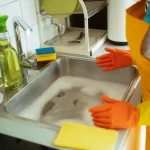Older homes in Toronto with their unique charm and historical significance often face significant challenges when it comes to flood-proofing. These homes were built before modern building codes and flood prevention technologies were established, making them more vulnerable to water damage. In this comprehensive guide, we will explore proven flood-proofing solutions tailored specifically for older homes in Toronto, ensuring they remain dry and secure.
Understanding the Flood Risks in Toronto
Toronto is no stranger to heavy rainfall and flooding. The city’s aging infrastructure, combined with climate change, has increased the frequency and severity of flooding events. Older homes, with their outdated drainage systems and potential structural vulnerabilities, are particularly at risk. Understanding these risks is the first step in implementing effective flood-proofing measures.
Common Flooding Issues in Older Homes
- Poor Drainage Systems: Many older homes have outdated or inadequate drainage systems that cannot handle heavy rainfall, leading to water accumulation around the foundation.
- Foundation Cracks: Over time, foundations can develop cracks due to settling or shifting soil, allowing water to seep into basements and crawlspaces.
- Outdated Waterproofing: Older waterproofing materials may have deteriorated, reducing their effectiveness in preventing water infiltration.
- Basement Flooding: Basements in older homes are particularly susceptible to flooding due to their below-ground location and potential for poor drainage.
Proven Flood-Proofing Solutions
Implementing the following flood-proofing solutions can help protect older homes in Toronto from water damage:
1. Install a Sump Pump
A sump pump is an essential tool for preventing basement flooding. It collects and pumps out excess water that accumulates in the sump pit, directing it away from the foundation. For older homes, consider installing a sump pump with a battery backup to ensure it operates during power outages.
- Regular Maintenance: Ensure the sump pump is regularly tested and maintained to keep it in good working condition. Clean the sump pit and check the pump’s functionality periodically.
2. Upgrade Drainage Systems
Improving the drainage system around your home can significantly reduce the risk of flooding. This includes:
- Extending Downspouts: Extend downspouts at least 6 feet away from the foundation to direct water away from the house.
- Installing French Drains: French drains are trenches filled with gravel and a perforated pipe that redirects water away from the foundation.
- Grading the Landscape: Ensure the ground around your home slopes away from the foundation to prevent water from pooling near the house.
3. Waterproof the Basement
Waterproofing the basement is crucial for preventing water infiltration. This can include:
- Interior Waterproofing: Apply waterproof coatings to basement walls and floors to create a barrier against water. Install a vapor barrier to reduce moisture buildup.
- Exterior Waterproofing: Excavate around the foundation and apply waterproof membranes or coatings to the exterior walls. This method is more invasive but highly effective in preventing water from entering the basement.
4. Seal Cracks and Gaps
Inspect the foundation, walls, and windows for cracks and gaps that could allow water to enter. Use hydraulic cement or epoxy to seal any openings and prevent water infiltration.
- Window Well Covers: Install window well covers to prevent water from entering basement windows.
5. Install Backwater Valves
Backwater valves prevent sewage from backing up into your home during heavy rainfall or flooding. Installing these valves can protect your basement from contamination and water damage.
- Regular Maintenance: Ensure backwater valves are regularly inspected and maintained to keep them functioning correctly.
6. Utilize the Basement Flooding Protection Subsidy Program
The City of Toronto offers a Basement Flooding Protection Subsidy Program, providing financial assistance to homeowners for installing flood protection devices. Eligible work includes the installation of backwater valves, sump pumps, and severance and capping of storm sewer connections
- Application Process: Homeowners can apply online for a subsidy of up to $3,400 per property. Ensure that all work is performed by a licensed plumber and meets the program’s eligibility criteria.
Additional Flood-Proofing Measures
Beyond the basic solutions, there are additional measures you can take to further protect your older home from flooding:
1. Install a Weeping Tile System
Weeping tile systems, also known as perimeter, drains, are designed to collect and channel water away from the foundation. These systems can be installed around the exterior or interior of the foundation to prevent water accumulation.
- Exterior Weeping Tiles: Installed around the perimeter of the foundation, these tiles collect water and direct it to a sump pump or drainage ditch.
- Interior Weeping Tiles: Installed under the basement floor, these tiles collect water and direct it to a sump pump for removal.
2. Use Flood Barriers
Flood barriers, such as sandbags or inflatable barriers, can be used to create a temporary barrier around your home during heavy rainfall or flooding events. These barriers can help prevent water from entering the basement or crawlspace.
3. Install a Battery Backup for Sump Pumps
A battery backup ensures that your sump pump continues to operate during power outages, which are common during severe weather events. This additional layer of protection can prevent basement flooding when you need it most.
4. Maintain Gutters and Downspouts
Regularly clean and maintain gutters and downspouts to ensure they are free of debris and functioning correctly. Clogged gutters can overflow and direct water towards the foundation, increasing the risk of flooding.
5. Inspect and Maintain Plumbing Systems
Regularly inspect your home’s plumbing system for leaks, corrosion, or other issues that could lead to water damage. Address any problems promptly to prevent water from entering the basement or crawlspace.
When to Call a Professional
While many flood-proofing measures can be handled by homeowners, there are times when it’s best to call a professional:
1. Significant Foundation Cracks
If you find large or widening cracks in your foundation, a professional can assess the damage and recommend appropriate repairs to prevent further issues.
2. Persistent Water Issues
If you notice persistent water issues around your foundation despite taking preventative measures, it’s essential to have a professional assess the situation and recommend solutions.
3. Sump Pump Installation
Installing a sump pump requires expertise to ensure it functions correctly. A professional can help you choose the right model and install it to industry standards.
4. Waterproofing Services
Professional waterproofing services can provide comprehensive solutions to protect your basement from water infiltration. This can include installing drainage systems, applying waterproof coatings, and sealing cracks and joints.
Conclusion
Flood-proofing older homes in Toronto requires a combination of modern technology and traditional methods. By implementing proven solutions such as sump pumps, upgraded drainage systems, waterproofing, and backwater valves, you can protect your home from water damage and ensure its longevity. Regular maintenance and professional assistance are key to keeping your home dry and secure.
Call to Action
If you’re concerned about flooding in your older home or need professional assistance to implement flood-proofing measures, contact Absolute Draining & Plumbing. Our experienced team is here to help you with all your flood prevention needs, ensuring your home remains safe and dry. Contact us today to schedule a consultation and take proactive steps to safeguard your property.
Additional Resources
For more information on flood-proofing solutions for older homes in Toronto, check out these helpful resources:






